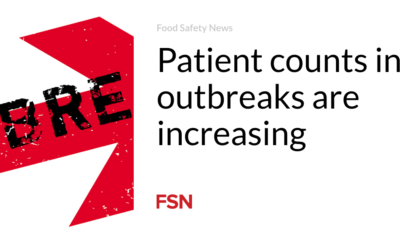Health
Why Doctors and Patients Choose Concierge Medicine

A doctor listens to a patient’s heartbeat, circa 1935. (Photo by FPG/Hulton Archive/Getty Images)
In May 2023, Joanna Loewenstein MD opened her concierge internal medicine practice in New York City, the first of its kind at Weill Cornell. Raised on Long Island, Dr. Lowenstein recalls that her father, a gastroenterologist, was a beloved figure in the community.
“My father would see his patients at the bagel shop on Sunday mornings and they would call our home phone to discuss their medical problems,” she said. “After ten years as an internist, I realized that I was becoming overwhelmed when someone came in with a complex health complaint. I became a doctor to care for sick patients, but I didn’t have enough time to do that as thoroughly as I wanted in the clinic, where each appointment lasts 15 minutes. We put our patients in an impossible situation: we instruct them to make an appointment when they have questions (since we don’t get paid to answer phone calls), but then we have no appointment slots to give them, when they call we do . I couldn’t get to know my patients as deeply as I wanted, and I couldn’t help them in the ways some of them really needed.”
Dr. Lowenstein’s practice charges a $5,000 annual fee for patients; her practice also charges patient insurance for things like labs, imaging and follow-up visits. She struggles with the fact that not everyone can afford to see her. She knows the naysayers say it’s immoral to charge for primary care, which many believe is a fundamental right. But she says it’s the only way forward for her own medical practice.
“I couldn’t possibly be happier. This is the kind of doctor I always wanted to be. I couldn’t keep doing what I was doing; I would leave clinical medicine altogether. In my practice I now see a wide range of patients, many of whom are very ill. They are so grateful for my care. In New York, most people pay at least double what I charge just to park their car.”
Samuel Ganz, DO is an internist who started a concierge practice in South Florida in 2021. “I left standard medicine because I was burned out caring for too many patients in too little time, working within a managed care model. I just couldn’t work in a system that I felt was knowingly hurting patients.”
The practice of Dr. Ganz charges an annual membership fee of $15,000 and does not accept insurance. “My patients appreciate having direct access and contact with me, especially those who have little time or are very ill and elderly. These patients don’t want to wait for appointments to sit in a waiting room.”
More recently, Dr. Ganz called a concierge practice Med2Uinc that provides direct access to all types of medical care, not just primary care.
“We recently had a patient with an unusual medical problem who had a flight the next day. We agreed that an expert would visit him immediately that same day. The diagnosis was made, the patient was cared for and he was on the flight as planned.
Dr. Ganz believes concierge practices are growing because patients are so dissatisfied with the current system. “They do not have access to their doctor. The next appointment is always in six months. They do not feel heard or cared for. And as a doctor I agree with them.”
Dr. Lara Briseno Kenney is an internist specializing in hematologic oncology and hospice palliative care. She opened her rural West Central Missouri “Direct Care” excercise in January 2019, the first direct hematology-oncology specialty care practice opened in the US
Direct care and concierge care are slightly different, although some people use the terms interchangeably. Concierge practices generally charge a membership fee and also bill insurance for each service (or provide a bill for patients to submit to their insurance). In a direct care model, physicians do not contract with commercial insurance companies at all.
“I tell patients that their membership fee includes all of my ‘physician services.’ There are no visit limits or copays to access me and my expertise. Their membership fee includes all of my physician services, whether they need me three times or thirty times at a time. years,” says Dr. Kenney.
Currently, Dr. Kenney charges $100 monthly for hematology, oncology and palliative care patients and $60 per month for internal medicine patients. Her average patient consists of middle-aged, rural, working-class, and peasant people. New patient consultations are booked for 2-hour visits and follow-up patients for 1-hour visits.
Dr. Kenney says the majority of her patients actually have insurance, a common misconception in the direct care model. However, they choose to pay the affordable out-of-pocket costs for their medical care because “they want a real relationship with their doctor and the office and they appreciate the transparent and affordable out-of-pocket prices. So their insurance simply serves as a safety net in case they are hospitalized or experience a major medical event. But even serious diagnoses like cancer can often be more affordable in this model,” Dr. Kenney explains.
Consider a patient recovering from breast cancer. She needs support, education, medication, regular physical checkups and annual mammograms. As a member of Dr. Kenney’s practice, she pays $1,200/year to see Dr. Kenney as often as she needs for doctor visits. Additionally, she can choose to pay for labs and mammograms through insurance or through Dr. Kenney, which offers low out-of-pocket rates such as mammograms from $175-210.
Why would an insured patient pay out of pocket for a mammogram or laboratory test? When using insurance-based clinics and systems, patients face costs in the form of insurance premiums, facility fees and multiple, consecutive charges for nurse visits, lab admission charges, radiology charges, physician charges and other unknown and unexpected billing statements. When using traditional insurance models, there is a lack of cost transparency and patients experience anxiety about how much they will ultimately have to pay, when those bills will ultimately be paid and what they will ultimately have to pay.
“Having insurance doesn’t mean you have access to good medical care, and that’s why the practice of direct care is growing. Patients know what they value and are willing to pay for it.” Dr. Kenney also emphasizes how much happier she is practicing medicine in this new model, which offers an improved lifestyle and work flexibility.













